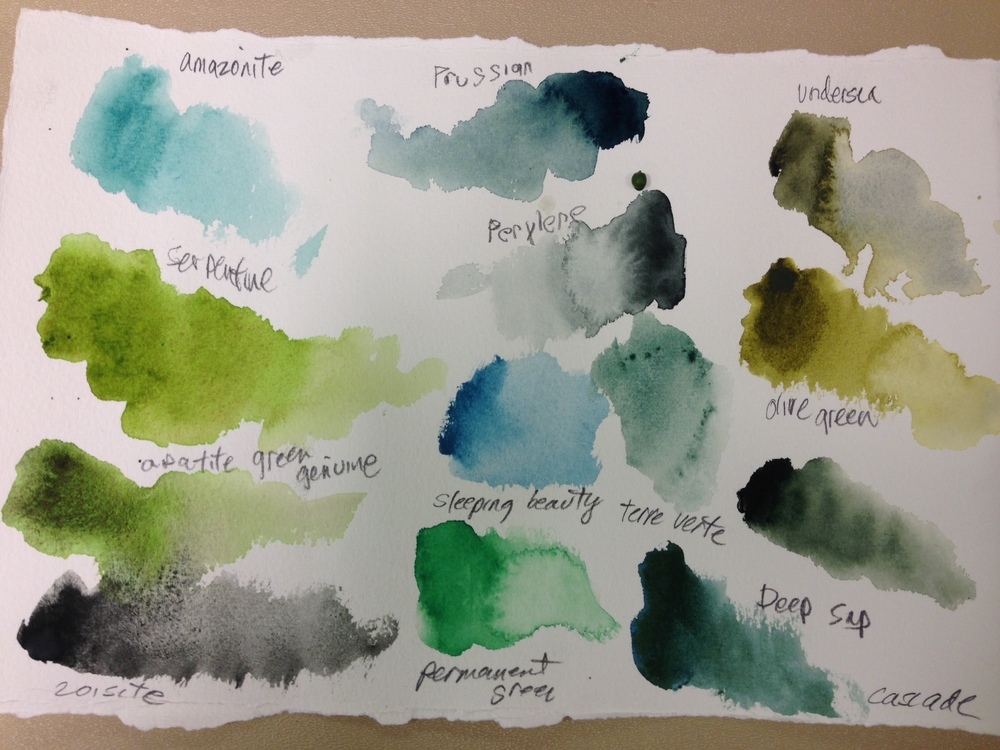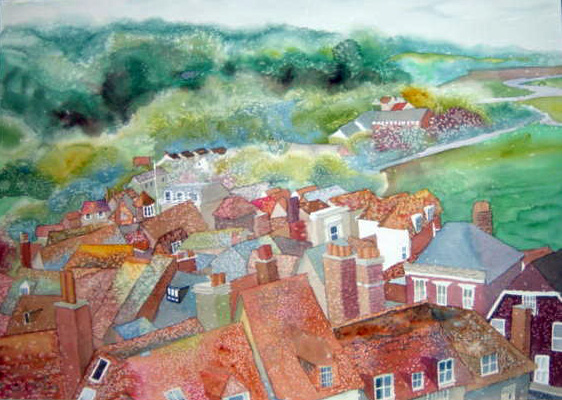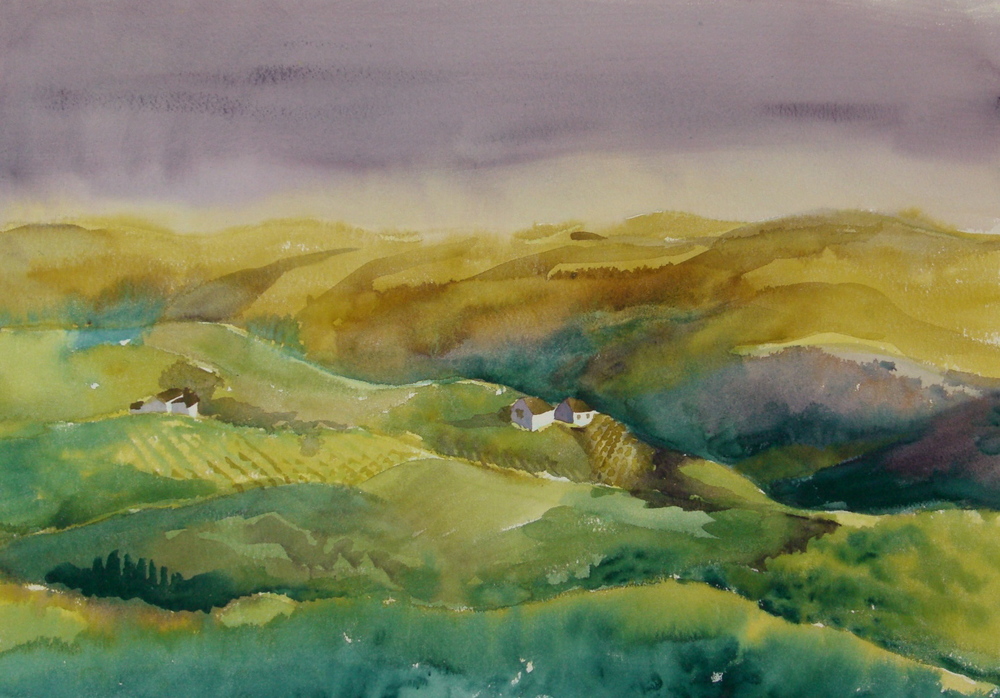There are so many ways to save whites in watercolor. It’s one of the charms of this medium that isn’t available to other media.
Sand paper on dry pigment - Light sanding draws up the tooth of the paper, and can give you highlights or simple texture. You can do light sanding for highlights or texture, or more sanding to go all the way back to white with soft edges. Be sure to press the fibers of the paper back down when you’re done. I use a plastic spoon or polished rock to do this.
Masking Fluid - Available at art supply stores, you can paint it on watercolor paper to block the paint from absorbing. When dry and removed, the paper will be the original white. I put dish soap or bar soap on the brush I use to apply mask. This keeps the mask from absorbing into the fibers of the brush. Just put the soap on the brush, and then squeeze off the excess. I dilute my mask by about 1/3. It keeps its potency but is easier to apply. The brushes you use for mask should not be used for anything else. I use cheap brushes for this, or old ones that no longer are useful for painting.
Candle or wax - Applying this before painting creates a repel. The down sides: the wax cannot be safely removed so no more pigment can be applied, and you cannot achieve any hard edges; it’s hard to control.
Glue sticks don’t work.
Fingernail scratching - When your paint is wet but not shiny, you can scrape your fingernail on the painted surface, and it will push the paint aside. This is a great technique for creating grasses and leaves in landscapes, usually in the foreground. It makes very graceful, long or short strokes.
Masking Tape - I use artist’s tape because it is easy to remove and doesn’t leave a residue. You can cut it in shapes or strips to meet your needs. One of my students recommends yellow frog tape you can find at home improvement stores or hardware stores. This is a great masking technique for hard, straight edges.
Magic Erasers - Great invention! I use this for fixing booboos, ship masts, or any other small white I have lost. I put strips of tape put close but not touching, then apply the eraser gently between the strips to create a mast. You can apply tape and cut out a shape gently, removing the shape. Then apply the eraser. To use the eraser: tear off a piece about 1” square. Spray or dip with clean water (not water you will be painting with), then squeeze out as much water as you can so it’s not drippy. You can then gently apply to the paper.
Salt - This is a great repel. Be sure to keep your painting flat and level while using salt. The bigger the salt granule, the greater the burst of white. I use popcorn salt, table salt, and epsom salt, but all salts work. No need for anything fancy. Apply the salt when the paint is wet but not shiny, otherwise the salt will dissolve and have no effect. Allow the salt to dry completely then it will recrystallize on the surface and can be brushed off the paper. Way cool. Note: you can only do this on the original wash - following layers don’t allow the salt to be absorbed by the paper because of the gum arabic in the pigment which acts like a barrier for the salt.
Lifting with Paper towels, cloth, or other textures - While the paint is still wet you can apply surfaces to lift paint and create white. Paper doilies, gauze, bubblewrap, stencils, or any textured surface you can find. You can apply the paint before or after you use the texture.
Water drops - I often splash with water from my brush, particularly on trees where I’m trying to create an interesting but irregular surface. I use small brushes for small splashes and larger brushes for larger splashes. Experiment to get the size of splash you want. Water drops have to be applied to paint that is still damp. If it’s too wet, the water drops will create blossoms. If it’s too dry, the water drops won’t work.
Scratching with a knife or sharp object - This creates an irregular scratch line that actually tears the surface of the paper. It can be done as a linear technique or in a more controlled shape. Just be sure to press the fibers back down with a plastic spoon or your fingernail or a polished stone.


